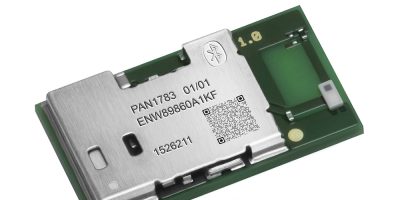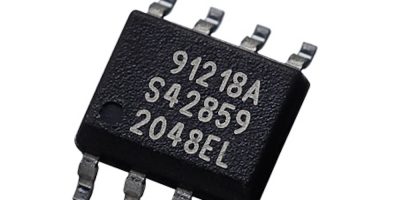STMicroelectronics has announced mass-market availability of new STM32MP23 general-purpose microprocessors (MPUs), combining high-temperature operation up to 125°C with the speed and efficiency of dual Arm Cortex-A35 cores, for performance and ruggedness in industrial and Internet-of-Things (IoT) edge compute, advanced HMI, and machine-learning applications.
Joining the STM32MP25 series launched in 2024, the new MPUs contain dual 1.5GHz Arm Cortex-A35 cores, a 400MHz Cortex-M33 for real-time applications, and a neural network accelerator with 0.6 TOPS performance. There is also a 3D graphics processor, H.264 decoder, MIPI CSI-2 camera interface with raw data support, dual Gigabit Ethernet ports with time-sensitive networking (TSN), and two CAN-FD interfaces.
Combining diverse processing resources and optimised on-chip features, the STM32MP23 series fulfils numerous sensing, processing, and data-handling roles throughout smart factories, smart cities, and smart homes. With the neural engine, bringing AI and machine-learning capabilities, these MPUs handle intuitive and adaptive HMIs, vision-based interaction, and predictive maintenance. The H.264 decoder supports up to 1080p60 video resolution and the 3D GPU handles high-performance, real-time graphics with support for open-source frameworks including OpenGL, OpenCL, and Vulkan.
The STM32MP23 series targets SESIP3 (already achieved for STM32MP25 MPUs) and PSA Level 1 certifications. Protection features include secure boot, Arm TrustZone architecture, secure key storage, and tamper detection, with hardware cryptographic accelerators.
Coinciding with the STM32MP23 release, ST is also extending support for each release of the OpenSTLinux distribution from two years to five years. The enhanced support ensures stability for customers throughout development and extends access to the latest security patches easing compliance with the EU Cyber Resilience Act (CRA). ST’s commitment to mainlining OpenSTLinux lets developers work comfortably with popular frameworks including Yocto, Buildroot, OpenWRT, and OpenSTDroid, and helps accelerate time to market.
Additional benefits for developers include three BGA package options that offer the choice of high-density 0.5mm interconnect pitch or 0.8mm pitch that allows simplified 4-layer PCBs with plated-through holes. The three packages are all pin-to-pin compatible with STM32MP25 MPUs. The devices operate over the industrial temperature range, from -40°C to 125°C maximum junction temperature.







